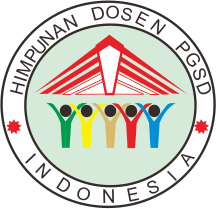A Proposal of a Method to Promote Creativity Based on Computational Thinking Using Modified Problem-posing
Abstract
The development of creativity and computational thinking (CT) has been emphasized in education through various studies and research. In activities such as problem-based learning (PBL), students are required to set and solve problems independently. However, it is often difficult for them to discover problems independently, and for teachers to evaluate them appropriately. This study focused on activities where students created problems, that is, problem-posing and examined methods for demonstrating creativity based on CT. Using this method, students were asked to modify and improve the original problem based on CT. The advantages of this method are that it encourages students to understand the structure of the problem, allows them to create entirely new problems, and helps teachers evaluate their work properly.
Keywords
References
[1] Wing, J. M, Computational Thinking, Communications of the ACM, 2006; 49(3): 33–35.
[2] Google for Education, Exploring Computational Thinking: CT Overview.
https://edu.google.com/resources/programs/exploring-ComputationalThinking/#!ct-overview
[3] International Society for Technology in Education (ISTE) and the Computer Science Teachers Association (CSTA). Operational Definition of Computational Thinking for K–12 Education. 2011. http://www.iste.org/docs/ct-documents/ComputationalThinking-operationaldefinition- flyer.pdf
[4] Shute, V. J., Sun, C., and Clarke, J. A. Demystifying Computational Thinking, Educational Research Review, 2017; 22: 142–158.
[5] Guilford, J. P. Intelligence, Creativity, and Their Educational Implications, San Diego: Knapp; 1968.
[6] Csikszentmihalyi, M., Creativity, In R.J. Sternberg, Encyclopedia of human intelligence, Macmillan; 1994. 298–306.
[7] Onda, A. Research of Creativity. Tokyo: Kouseisha-kouseikaku Corporation; 1971. (in Japanese)
[8] Duch, B. J., Groh, S. E, and Allen, D. E. (Eds.). The Power of Problem-based Learning. Sterling, VA: Stylus; 2001.
[9] Kwon, O. N., Park, J. S., and Park, J. H. Cultivating Divergent Thinking in Mathematics Through an Open-ended Approach. Asia Pacific Education Review. 2006; 7(1): 51–61.
[10] Chamberlin, S. A., and Moon, S. M. Model-eliciting Activities as a Tool to Develop and Identify Creatively Gifted Mathematicians. Journal of Secondary Gifted Education, 2005; 17(1): 37–47.
[11] Freire, P. Petagogy of the Oppressed, USA: Penguin Modern Classics; 1970.
[12] Polya, G. How to Solve It: A New Aspect of Mathematical Method, USA: Penguin; 1990.
[13] Wallas, G., The art of Thought, London: Jonathan Cape; 1926.
[14] Fukui, M., Kashiwagi, M., Miyadera, R., Hagikura, J., Sasaki, Y., and Hirashima, T. Proposal of Creativity Evaluation Method Using Well-Structured Problems, International Conference on Computational Creativity 2019 (ICCC 2019), 2009. (unpublished)
DOI: 10.30595/dinamika.v16i1.21467
Copyright (c) 2024 Masanori Fukui

This work is licensed under a Creative Commons Attribution 4.0 International License.
ISSN: 2655-870X
|
Visitors














